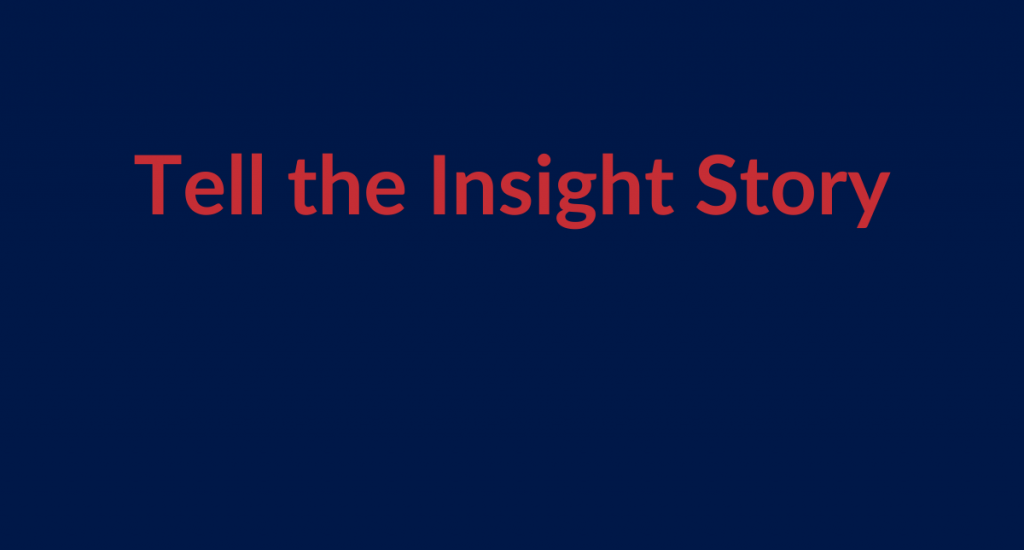It’s vital to have a genuine insight story not just some mildly interesting data masquerading as a story. These seven tests will guide you towards always landing your message as an impactful narrative.
The Insight industry has come a long way from the dark days of presentations plodding through isolated chunks of data – the desk research, the qualitative findings and then the survey results – without integrating the evidence to answer the business question.
However, there is still some way to go. We still hear complaints about so-called insights stories being no more than a string of mildly interesting observations that do not tick all the insight storytelling boxes.
Here we suggest seven tests – conditions for success – that you could apply when constructing your next insight story.
One: Have you set the scene for your story by outlining the context of the business question?
Great storytellers know that context explains everything. Film directors often begin their stories with an establishing shot. This sets up the overall context and perspective for the subsequent story – the lens through which the story will be told. In the business world, this means demonstrating at the outset that you understand the big business picture.
Two: Is there a dilemma, tension, or conflict that lies at the heart of your insight story?
Ask yourself if you have a dilemma or tension at the core of your story. Unravelling this conflict will keep the audience engaged. Take them on a journey towards the solution to the business question. Select the best story structure for tackling the tension – business problem – you are addressing.
Three: Does your story touch the audience’s world with deep rich insights that will keep them engaged and entertained?
Great insight storytelling is about encouraging the audience to look at an issue in a different way. Start captivating your audience with a story that challenges received wisdom and does some myth-busting. And maybe provide some counter-intuitive, unexpected insights that will surprise your stakeholders. A powerful well-structured insight story will also go deep into how customers are thinking and feeling – and how they are likely to behave – in relation to the topic you are investigating.
Four: Is your storyline supported by substantive evidence?
It’s about hitting the sweet-spot between effortlessly keeping the storyline flowing, and elegantly substantiating each point with the appropriate amount of evidence. Focus on the killer evidence that supports your solution to the conflict or tension in question. Journalists talk about their stories needing to stand up. They provide just the right amount of evidence to support the central storyline. They go beyond just providing superficial snippets of evidence but avoid information overload.
Five: Have you built critical lean-in points into your storyline?
We live in an attention deficient world, so the skilled storyteller knows how to build into their presentation different hooks that will tap into stakeholders’ emotions. Great novelists know how to write page-turners – their readers will always want to know what happens next. It’s your job as a storyteller to command the attention of the audience, change the pace and sustain interest through to the landing of your message. The author George Orwell constantly asked himself whether he could have been clearer, more succinct, but most importantly more memorable.
Six: Does your story frame the decision choices open to stakeholders?
The structure of a powerful insight story will naturally begin to frame the decision choices open to stakeholders. Each decision choice will have the risks and opportunities outlined, together with a professional assessment of the likelihood of success – and the consequences, of making each choice.
Seven: Have you created a story that the audience will want to share with others?
If you have created an elegant and memorable storyline that answers the business question, your audience will want to share it with others. Think of powerful insight stories as becoming a kind of social currency. By sharing a new insight – a new way of solving a problem – your audience becomes associated with a success story. They enjoy some kudos by sharing.
I hope you find these seven tests helpful in constructing a compelling insight story that will engage the audience and land your message.
To help enhance your storytelling skills, you might like to check out DVL Smith’s online storytelling programme – Tell the Insight Story.

